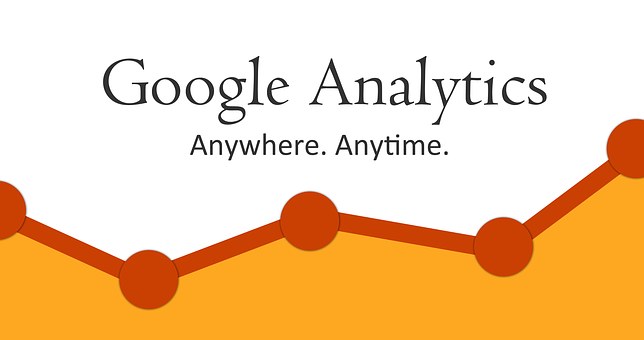Understanding your customers and how they’ll behave is one of the most important things every salesman is aware of. However, it can be much harder to understand their behavior for online businesses. Nevertheless, it’s possible with the help of Predictive Analytics to project which of your products your customers would be most likely to consider or purchase.
You can also figure out the highest price your customers are going to pay for a product, thus maximizing your profit. You can also use Big Data analytics for focused customer group targeting, or to evaluate campaign strategies and gain an edge over your competition. Read on as we give you the easiest tips on how to turn the tables for your eCommerce and increase sales by using these methods.
Pages Exit Rates
Having increased traffic doesn’t necessarily mean having improved conversion rates. If you’re experiencing an increased visitor attention and your profits are stagnating – it’s a sign to look at your pages exit rates.
In Google Analytics, high-exit rate pages will highlight the place where your visitor decided to abandon the site. They might think your prices are steep, or you’re not offering free shipping to their country, or maybe that webpage is loading slower because of non-optimized images. In any case, knowing where they decided to quit is the first step to knowing why they decided to leave. To figure out why, though, you’ll need to offer a survey to identify the problem.
Exit Surveys
Exit surveys are initiated when the system detects an exit intent, which can happen in two basic ways. Either the user moved a cursor above the certain line towards the top, or based on rapid mouse movement towards the top – which usually means they’re about to exit. This is when the feedback survey should be triggered.
While these surveys may seem intrusive to some users, most of the people who leave your website won’t be coming back anyway – and if you’re left with no info at all about why they left the site, you can’t do anything to improve your service. The insights these surveys can provide you will improve your conversion rates in the long run.
Price Optimization
Traditionally eCommerce businesses used A/B testing to determine the optimal prices for each of their products and come up with maximum profits. However, the problem with this method is that each price has to be set manually and is thus more prone to human error. Predictive analytics builds a model to support real-time pricing by using input from different sources, some of them being:
- Competitor pricing
- Available Inventory
- Customer Activity
- Historical Product Pricing
- Order History
Recommendations and Personalized Offers
Today it’s all about knowing your customer’s needs. As part of the Big Data, information like past purchases and searches can be used to generate automatic recommendations for every individual user. This will provide a richer and more interactive experience to your customers, but also increase your revenue through cross-sales and up-sales as well.
You can also get some useful insights from your buyer’s actions on social media or based on their search history, which will allow you to offer them more personalized advertisements. And the best thing about it? Gone is the time when the customers were vary of collecting data, now they actually prefer personalized marketing.
Inventory Management
Through predictive analytics you can make sure that your inventory is always properly stocked, but also to prevent overstocking. The idea is to minimize the threshold inventory for any products that, based on predictive model, don’t have a notable sales income.
This will help you allocate your funds and invest in products that have a higher demand at that moment, potentially increasing your profits in the process. This is especially important when it comes to reducing spoilage, but it also means cost cuts for storage purposes when it comes to eCommerce retailers.
Traffic Sources Analytics
A traffic source is the place where your visitor decided to enter your website. It can be organic traffic, when someone found you through a search engine, or referral traffic, when someone stumbled upon a link to your site on another website.
- Organic Search Optimization – SEO is the most important factor when it comes to bringing new traffic to your website. This is why professionals like Nirmal eCommerce web design recommend keeping SEO in mind when designing a website. Always try to look at where your visitors landed from the search engines because it can help you with the conversion rates if you have good navigation on those pages.
- Referral Traffic Optimization – By using a targeting tool to trigger a pop-up survey based on the referral source you can increase conversion rates for these visitors. For example, if a blog stated that your home moving service is top-notch but you’re overcharging on packaging – you can then offer a discount on packaging services to visitors referred to your site by that blog.
Fraud Detection
Billions of dollars are lost due to fraud every year in the retail business. This is why any technology that can detect fraud and reduce the loss from it is extremely valuable for retailers. Predictive analytics can help you analyze browsing and purchasing patterns, payment methods or even help you automatically define rules for your anti-fraud system. Almost 20% of retailers use predictive analytics solely for this purpose, which goes to say how much effort is put in fraud prevention.
Conclusion
In today’s environment, it’s crucial to use predictive analytics technology if you’re looking to succeed in eCommerce market. While you don’t have to use it for everything we’ve covered in this guide, it’s important to apply it to those areas that will guarantee the maximum impact on your business. Keep in mind that it takes some time for the results to start kicking in, so it’s important that you continue to monitor the models and refine them if the need arises.


















![Top tips and tricks to improving your customer experience [Infographic]](https://crayondata.ai/wp-content/uploads/2019/01/customer-journey-1.jpg)


